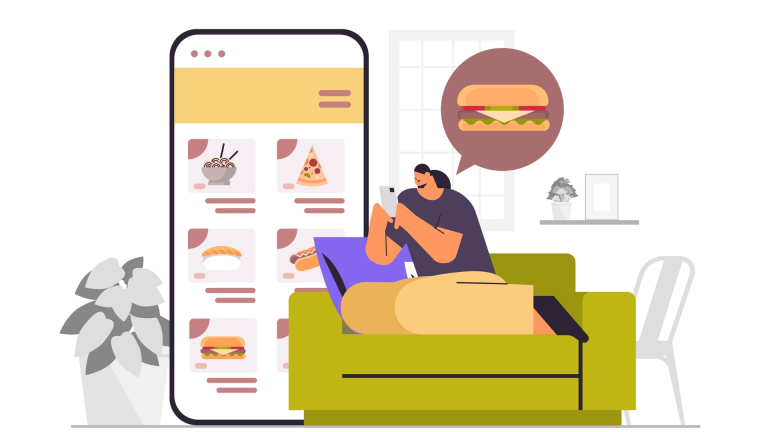The choice of whether to build, “rent”, or partner for a conversational AI solution is critical and will affect time to market, brand loyalty, the ability to view data, and more. Companies can choose to build the solution themselves, which could take a lot of time and money. They can “rent” from a big tech platform, which does have short-term benefits, but the loss of brand identity and control of data have long-term consequences. Finally, companies can partner with an experienced voice AI platform with proven technology, giving them all the benefits of owning the solution with a shorter time to market.
Recently, Darin Clark, Director of BD at SoundHound, sat down with Eric Turkington, VP of Growth at RAIN Agency, and John Goscha, Founder & CEO of Native Voice, to discuss the urgent need for brand-owned conversational voice experiences. They shared their insights on the choices companies must make to get to market faster with voice assistants that meet the unique needs of their customers and business goals.
Read the recap below or watch the full interview, “Build, ‘Rent’, or Partner: Get to Market Faster with the Right Voice AI Strategy” here.
Darin: Can you define what we mean by build, “rent”, or partner for a conversational AI strategy?
Eric: Yeah, absolutely. I think there’s been an interesting dynamic playing out in terms of big tech versus brands, which is kind of reminiscent of other tensions that brands have been faced in the last decade or so.
Big tech has such scale and their assistants are no exception. I think having a presence on an Alexa or Google assistant has been the early way that a lot of brands have thought about building a voice presence—leveraging existing tools and trying to take advantage of the reach those assistants have.
In the last maybe three or four years, some of the drawbacks to a big tech assistant approach have become apparent. That’s not to say that those assistants aren’t relevant to brands or valuable, but I think there are a lot of challenges.
Fundamentally, it comes down to control versus distribution. I think brands that are looking to distribute an existing product to audiences that are big users of Alexa can’t ignore it and should think about what their presence looks like. But brands wanting much more control over the experience and their products, whether that’s apps or devices, should think about how an assistant can come to life in those environments in a much more nuanced and ownable capacity when you’re owning the data and experience.
John: We talk with brands every single day, and we’ve seen brands that have previously worked to build their own voice assistant, hiring large groups of people and making big investments. Others have rented from Google or Alexa.
We’re seeing that the ecosystem of technology has evolved, and voice technology has gotten a lot better, which has caused a market catalyst where brands are saying, okay, the technology exists and is available to us.
It’s an interesting transition right now where brands can choose from a variety of tools rather than being locked into just one.
Darin: Can you address the issue of time to implement a customized voice experience and how you’re talking about that with your customers?
John: The brands that we talk to don’t want to live behind a big tech company. They want to own the customer relationship. They want to own their brand, experience, and data.
We’re also seeing that brands are delivering a better user experience when they’re able to focus on one thing versus the general voice assistant that’s a mile wide but only an inch deep.
Brands can build it themselves. They’ll quickly learn, though, that it’s not two people. It’s thirty people. It’s not one year but many years. So I’m seeing more brands partnering for either the entire solution or with multiple partners to put the pieces together.
I liken it to 2008 or 2009, when the smartphone was first starting to emerge and brands made these decisions. As voice is now becoming a primary interface, brands are asking questions. Do we want to own it, do we want to control it, or do we want to give it away?
Brands are moving the investment from the innovation group to a more strategic investment where they’re able to get to market faster and more efficiently.
Eric: I think in the early days of voice assistants, time to market and speed were very important. But now, there have been companies that are actually serious about a voice assistant and see it playing a long-term role in their brand and business. It’s now less about speed to market and more about what the actual versioning and functionality are.
Darin: How is voice moving into the realm of being a market differentiator and contributing to brand loyalty?
Eric: I think brands have woken up to the need to have a much more holistic sonic identity and branding as audio experiences have become increasingly important. There’s been sort of a renaissance in brand identity and how the tonal qualities of a voice assistant and personification can embody a brand’s principles.
Research shows that if you properly add the right UX sounds to a voice experience, it can be more memorable to users. It can be perceived as more efficient even if it’s just as fast as it would be without the sound effects. Voice system design is often overlooked, but it’s really critical to overall satisfaction and success.
Another essential aspect is the wake word. Your wake word is an incredible brand association and gives the brand more dimension. It’s a really useful brand differentiator.
John: Almost a third of Google searches are done on voice today. Voice has arrived. We’re soon going to have more voice-activated devices on this planet than we will have people. I’m seeing that brands are wanting to meet their customers where they are, but they’re also thinking about this in terms of quality.
Darin: Some companies may want to go with a solution that offers full-stack, while others may want to develop pieces internally. How are you seeing this play out in the market, and how are you discussing it with your customers?
Eric: There are some interesting trends of late. If you just look at the acquisitions space, brands are starting to realize that insourcing voice talent is especially important because quality voice talent is difficult to find.
When it comes to what we counsel our clients about, whether that’s going full-stack or assembling more of a custom stack from different providers, it really comes down to a roadmap and what’s scalable.
For example, last year, we were working with a fitness company that has both an app and a broad range of equipment. They wanted to think about the types of domain knowledge and NLU. I think that’s a great example of where a full-stack solution would thrive.
We’re also working with a company on a much more narrow use case, a data intelligence provider that wants to make its database voice queryable for its customers. It all comes down to what is the full picture of where your voice assistant will manifest and what you really need to own internally versus relying on partners to deliver.
Most often, owning your data is the most consistent thing that companies need to have in-house. It’s going to be the backbone of delivering your voice experience for the long term. That’s the item I would most often counsel our clients to take ownership of.
Darin: What are some of the benefits of an independent and customized voice assistant for any brand and at the product level? How are you discussing them with your customers?
John: We hear from customers that they’re frustrated that they don’t get a lot of data from big tech companies. Imagine if you were building an app, and you didn’t know where people were clicking, where they fell off, or how you could improve that app?
So you’ve got to have the fallback information to understand when it’s not working and where it can be improved. We also hear that a lot of brands feel constrained where they have limited options if they’re only living in one toolkit versus if they could pick the best tools from any ecosystem that’s best for them, their company, and what they’re looking for.
One of the biggest things is to have that data so they can improve. When they make those improvements, they can quickly deploy, and they own the value of those results.
Darin: How does giving your customer data to another entity potentially negatively impact a brand?
John: We all know data is one of the most important and valuable assets to a company today, and it will only be more so in the future.
Companies that respect user privacy and give users control of their data will be the hallmark of some of the most trusted brands going forward. But brands that are giving their data away or giving control to a third party are giving away potential.
Knowing the customer is how brands compete and win the market. It’s how they customize their services and better serve their customers. If they don’t have that data, they could be putting someone else in a position to become a competitor.
Eric: There’s a lot that looking at analytics can tell you about your consumers, from their behavioral patterns to their sentiment.
In the process of better understanding your customers and what they want, having the granularity of insight is very powerful. I also think consumers do have a conceptualization of what individual brands might do with their data compared to big tech companies. The customer will be more willing to engage if they know where their data is going and how it is being used.
Bonus: Questions from the Audience
Darin: Some of the larger voice AI companies like Amazon are creating custom solutions for cars and other use cases. Why wouldn’t companies want to go with that kind of solution?
Eric: Bringing another brand on board your vehicle is sort of innately lowering your brand. If you’re using both a branded voice assistant and one from big tech, then you need to question whether those handoffs are happening in an efficient and elegant way for the user. It could be potentially confusing to the user to have multiple assistants. There’s potentially a learning curve there.
It’s up to the brand and what they put a priority on, whether they want to make sure they fully own the experience with no intrusions from a big tech company.
John: We’re seeing that customers trust a particular brand to meet their needs. We all have these trusted relationships with brands, and we know what specific brands can do for us.
I’m seeing the same thing in voice where folks want to talk to the brand. Buick might be best for things in the car, but then Alexa is best at other things. Or maybe Google for search queries, but then Starbucks’ voice assistant for when ordering coffee. Consumers trust and have relationships with brands that they already know what a brand can do for them.
We’re seeing users would rather talk directly to a brand because they have trust. They have that relationship and know what the brand can do, so they have a much better experience.
Eric: I was frankly surprised by that ad campaign. I think it was great for Alexa and not so great for Buick. It’s like asking, why would we consider this car’s identity to be a Buick at all? I think to position their brand like that makes it so undifferentiated that it doesn’t even deserve to be called by its name.
I understand highlighting the feature, but in that instance, it felt like it was almost diminishing Buick. I’m not sure what the brand managers were necessarily thinking there. I think Amazon is probably very happy to have the implication that Alexa is a great brand that everyone knows.
Want more? Check out some of our other expert webinars:
At SoundHound, we have all the tools and expertise needed to create custom voice assistants and a consistent brand voice. Explore SoundHound’s independent voice AI platform at SoundHound.com and register for a free account here. Want to learn more? Talk to us about how we can help bring your voice strategy to life.





